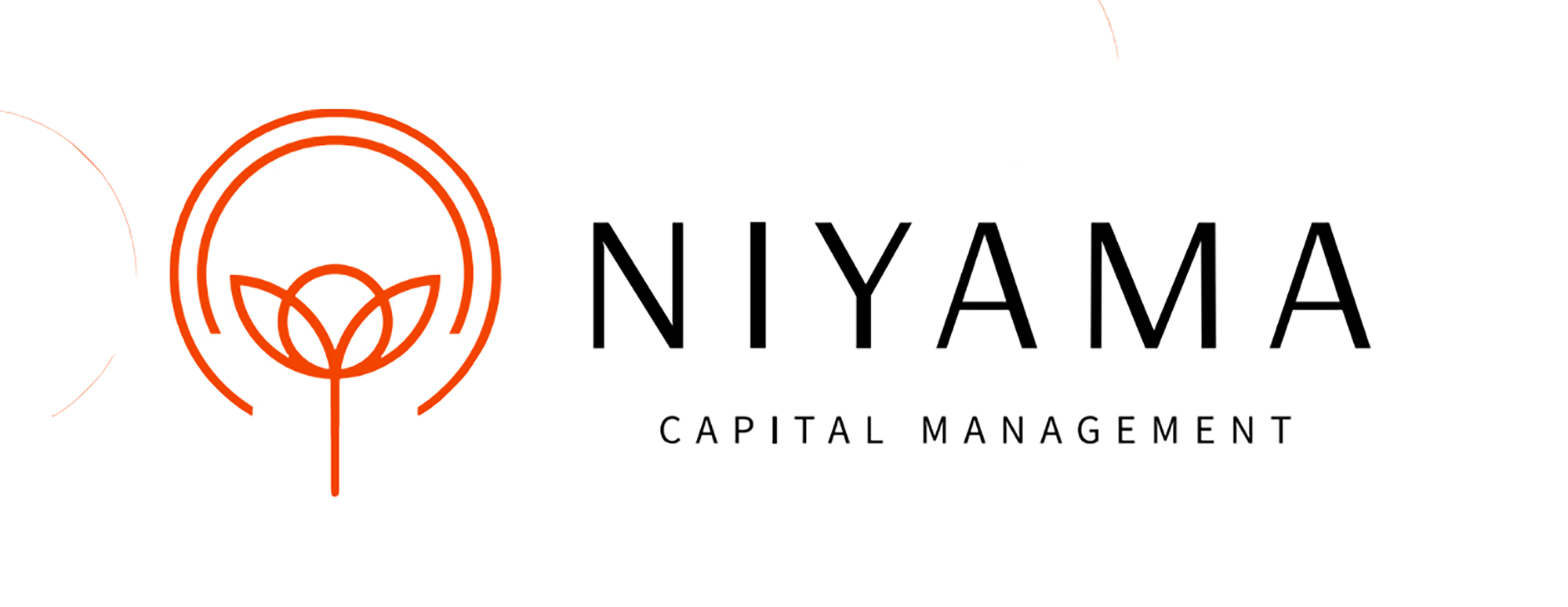A Unique Perspective on Investing

“Our job in this life is not to shape ourselves into some ideal we imagine we ought to be, but to find out who we already are and become it.”
Steven Pressfield
I was a portfolio manager at a >$5bb AUM hedge fund and compounded at 16% for 6 years. I have clarity on the art that differentiates me as well as the process that weaponizes this creative process. I would like to invite you on the ride with me as I continue my art and broaden its impact. First we will need to be on the same page around first principles. Following that, we can get personal . . .
First Principles . . . Why do Stocks Move?
If you own a stock, you own an “IOU” on some portion of the issuing company’s cash flows for the foreseeable future. There are two main components to this:
- Free Cash Flow ~ Earnings over some period of time (E)
- Foreseeable Future ~ How long will that ability to make money last (T)
You can visualize this. Below is a chart that was drawn for me early on in my career that simplifies how the two variables above come together simply to illustrate a stock price. This has been the north star of my career. Here is what that looks like -
No company lasts forever. At some point in the future, the competitive advantage of a company will go to zero, they will cease to make money and there is no reason for them to exist. That can happen for a variety of reasons, which we will revisit a bit later.
The "Value” (area under the curve) is today's stock price. The stock price goes up (or down) when the area under the curve changes. These changes are driven by:
- Change in the market’s expectation of future earnings growth
- Change in the market’s expectation of the “foreseeable future” (T)
It truly is that simple . . . over the long run. Short term, it can be a bumpy and noisy ride.
What Works For Me?
What works for me are themes that are large underlying architectural shifts. These tend to be one-way trains of change that are disruptive to the status quo. When I look for these changes, I look for one or more of the following:
- Customer / Supplier Behavioral Change
Customer behavior changes are usually driven by user interface changes. The simplest and most obvious example in recent history is the shift from PC to mobile. Supplier behavior changes are usually driven by cost structure. The shift to cloud offered a new cost / bit that allowed organizations to adopt software in new ways. APIs enabled (among other things) a new cost structure for payment settlement to ecomm providers. - Industry Structure Change
The most obvious two types of industry structure changes are consolidation and new entrant driven fragmentation. Many times new entrants are afforded entry due to the customer or supplier behavioral changes described above. Consolidation can be as obvious as a bunch of software companies buying each other and can be as subtle as every airline in the world “colluding” in one of 3 major reward programs! - Management Change
Management change usually involves new C-level management that re-envisions the company’s core asset on a more prospective basis. Microsoft for years was all about windows and re-envisioned their core asset around the broader theme of productivity. Management change has the power to free a company from path dependency and anchoring bias and is an important signal to stakeholders. - Supply / Demand
When the only two variables that determine pricing are supply and demand, the asset or service is usually a commodity. Here I believe fear of under capacity drives over supply and fear of over capacity drives under supply. There are some people that are absolute savants at the game theory that drives these fluctuations. I am not one of them.
The first three above are generally one-way trains and those work for me. Conversely, if I find myself assessing a change and wondering, “how long until this mean-reverts?”, it's time to move on to something else.
These changes are NOT mutually exclusive and usually happen in concert with each other. What always changes is the unit economics of the business (E) and the “foreseeable future” (T) of these unit economics.
The great news here is that time is on your side. So no matter the bumps and the noise, you are probably going to be ok. Does “probably going to be ok” allow you to sleep at night when the road gets bumpy? The answer to that is different for everyone. For me, having a great understanding of the narrative of the change helps me understand “why”.
As more and more narratives coalesce around a single “why” that is when you understand the underlying architecture shifts that are driving these changes. This is what I require for conviction.
Change as the phenotype, Architectural shift as the genotype
While a good idea starts by spotting change, conviction is driven by understanding what enables and drives the change. Microsoft provides an interesting example of this. What did you SEE at Microsoft?
- A new CEO (Management change)
- Office repositioned as SAAS (Customer behavior change)
- Azure supporting Red Hat Linux - an arch-rival (Industry structure change)
These changes fell into a narrative of change - Microsoft’s self-concept was shifting from Windows (an application) to Azure (enterprise compute platform). What was the underlying architecture shift that was so powerful to drive the aircraft carrier to change direction?
This was where qualitative interviews of their technology ecosystem were important. The mosaic from these interviews came together and clarified the underlying change:
The ability to provision scale compute resourceson demand and in bite size pieces
This coupled with their user base afforded them the opportunity to move down the stack and weaponize their compute platform!
The message here is that you don’t necessarily see architectural shifts - they are under the hood. That being said, everyone sees changes in customer behavior, supplier cost structure, industry structure, and management self concept. Seeing these changes as signals and empathizing with micro-narratives of change allow me to clarify what is going on under the hood. When I can do that, there are relatively few bumps in the road that ultimately shake my conviction.
Every Investor has a Unique Perspective on their Art . . .
My art is lateral thinking around change and determining where to apply effort. This falls into the bucket of “idea generation”.
I refined my art through consistency and focused execution of process. This art is the major input into 2 basic workflows
- Conviction - Empathetic interviews with participants in and around the change
- Risk Reward - Quantitatively making sure its all worth it
The more distilled your art, the more definable your process. This is important because process is the work and you can sit down every day and do it.
An Empathetic Ear Drives Conviction
The three specific (and obvious) phenotypes of change direct me on where to apply my art. Conventional thinking around Microsoft at the time was to think about the company as a software company. To think that a software company would move down the stack to become a capital intensive service provider was considered nuts.
What allows me to do this is my multi-disciplinary background. I have invested all the way up and down the stack of technology and have very few bias’ as to which sector makes for a great business and which one doesn’t. Additionally, I can speak the lingua franca of these different layers of the stack and position myself as an empathetic ear. In the Microsoft case, I spoke to router vendors, infrastructure software ecosystem participants, and hardware providers to understand their cost per bit as a service provider. That isn’t a language that a software guy speaks.
Listening to enough narratives within the ecosystem allowed me to distill the why, and I weathered a bumpy ride. What is MOST important to my process is hearing these narratives from different perspectives. That is what has driven the greatest conviction and the most profitable trades in my career.
Is the Juice Worth the Squeeze?
Part of making your art commercial is making sure that the juice is worth the squeeze. I frame these architectural shifts within the unit economics of a company (E) and my view on whether the foreseeable future (T) is getting longer or shorter. This allows me to put together several scenarios around how impactful that architectural shift is going to be on the stock price.
The most effective tool here is what I call a “simple model”. An old mentor of mine once called me into his office to talk about a stock that I was working on. I had this 300 line subscriber model that was forecasting every single variable I could think of. After 5 minutes of me saying things like “refer to line 72” to point out my insights, he facepalmed, put my model into the garbage and put up a blank excel sheet onto his computer. While I was smarting from shame and anger, he proceeded to put a basic year over year model with 5 lines together. He looked at me, pointed at his screen and said, “So what you are saying is that if you are right, three years from now, both ARPU and incremental margin should be higher?”. It was so simple and very correct. A deep understanding of the why, drove clarity and simplicity around which quantitative lever was most important!
This is the “risk reward” step of the process. If you make an investment in a stock, you better believe that there is a high quality expected pay out. This is done early in the process because going through and listening to all of these perspectives takes a lot of time and money!
Don’t Burn the Sauce!
What I have described above is my process for identifying a change and simplifying it into an investable sentence. Think about it like reducing a tasty sauce. Every now and then, the chemistry is wrong and the sauce breaks. When the sauce breaks, just throw it out! Not every observation can be distilled to a great investment. The real tragedy is when the sauce burns from overthinking a great idea. One can’t think through great art and one can’t let feelings supplant process. A mindful practice of investing has taught me how to achieve that balance.
